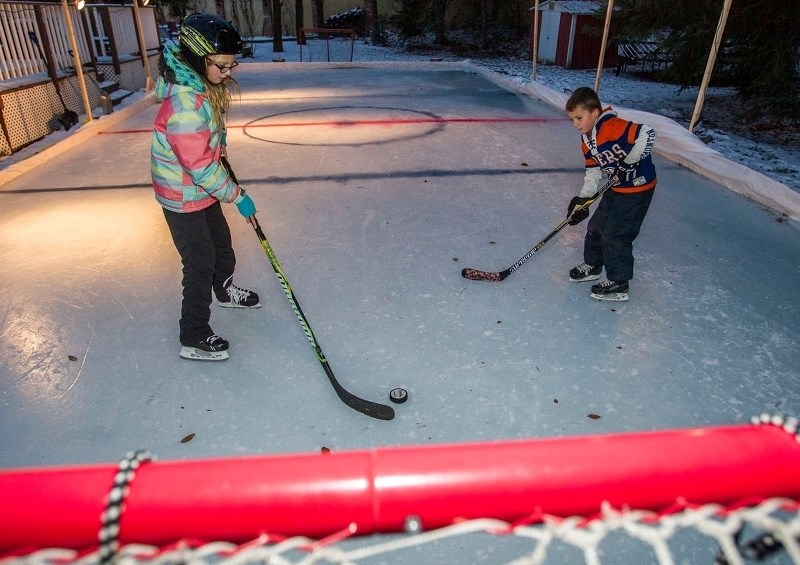One cold winter day last year, five-year-old Isaac Maynes wandered outside with a bottle of water and a pack of Kool-Aid to build a hockey rink.
The idea was from a children's book he read, and he was very excited about it, his mother Tanya recalls. But his parents were feeling less adventurous and quickly discouraged the little boy from further experiments in the snow.
That may have ended Isaac's dream of an ice rink for the day but not for good. After listening to him talk about "his own hockey rink" all summer long, the Maynes gave in and built a backyard hockey rink this year.
"Winter is so long here, might as well get outside and embrace it," says Tanya Maynes now, looking at the 57-by-23-foot rink outside her kitchen window.
Building your own backyard hockey rink is not difficult, if you know where to look. The family learned everything they needed to know from YouTube and the Internet, says Maynes.
While there is the option to build the rink from snow, they decided on a modern version, hoping it would not damage their grass.
On a trip to the hardware store, they bought a large, plastic rink liner for about $200 and some boards. The boards are used as the sides, while the liner (basically a large, plastic tarp) contains the water.
It took about a week for the rink to freeze. Then they painted lines on the ice with craft colour and put up Christmas lights, so the children can play after dark.
To smooth out the surface, they build a contraption with the name homeboni.
"Basically, the homeboni is a big PVC piece of plastic that you connect to the hose and a towelette and the water runs out and you drag it after you," she laughs, referring to the Internet for instructions on how to build the device.
"It takes three minutes of walking and it puts down and smoothes out a thin layer of ice."
Building with snow
You can also build the rink with snow, which costs nothing, says Umesh Chand. The public works operations team lead spends his winters building outdoor rinks for the city and looking after its turf in the summer.
To build a free backyard rink, all you need is an inch of snow, with a thick wall of snow pushed around it to hold the water in. This also helps with uneven backyards, he says.
Then you pad down the snow inside the rink by walking on it and add a thin layer of water, until the snow turns grey.
"Once that freezes, then start just layering light layers of water on top every day," he says. "By a week you will have an outdoor hockey rink. But make sure you have a border around it to hold the water in."
He stresses that people need to add thin layers of water, otherwise it will not freeze. The best way to do this is by spraying the water towards the sky, so it drizzles down on the rink like rain.
"Any imperfections, they can always take a shovel and run around with it and break off the sharp points so it's smooth," he says.
There is some danger of "burning" the grass underneath the rink with the cold, he adds. But the grass is not dead, and should come back in the spring with some fertilizer and good care.
The city-run outdoor rinks should be available to the public by mid-December, pending cold enough temperatures.
Learning by default
The Maynes' are already planning for the coming year. There's talk about adding boards to the site, and nets and additional lighting.
But there are also a few things they'll know better next time, says Maynes.
It would have been wiser had they measured the yard before flooding it, to make sure it did not only look but also was fairly even, she says. The family ended up adding boards to one side of the rink because the water was overflowing.
The temperature outside should also be fairly cold, so the water does not take too long to freeze. If you end up with bubbles beneath the surface, break them and fill them with snow, then smooth out the top with some water from a bottle and scrape it until its flat, says Maynes.
"I now consider myself a quality ice patcher," she laughs.
Otherwise, the Maynes' home rink has been a full success.
The children, 10-year-old Madeline and six-year-old Isaac use it every day. And whenever Isaac doesn't play, he sits at the window and watches his rink.




